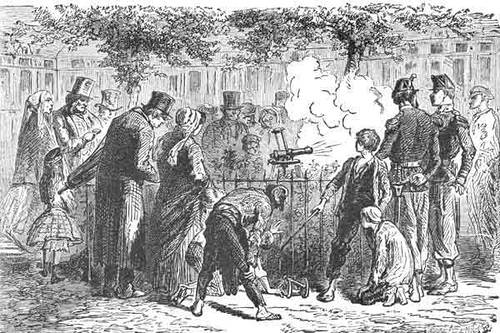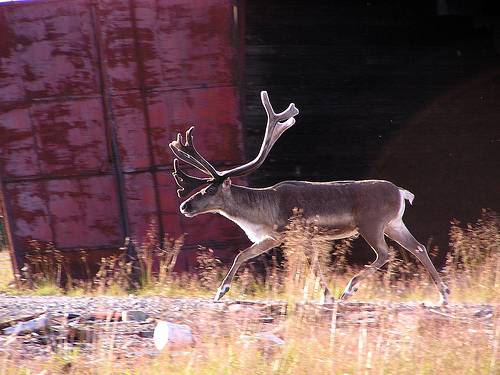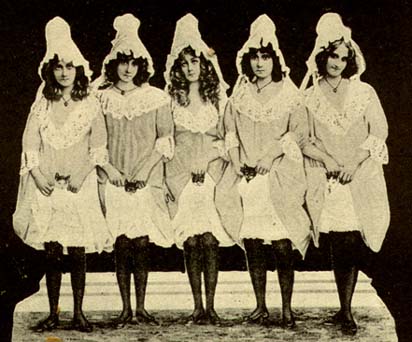
“In the Gardens of the Palais Royal, in Paris, there is a little cannon which stands on a pedestal, and is surrounded by a railing. Every day it is loaded with powder and wadding, but no one on earth is allowed to fire it off. However, far away in the realms of space, ninety-three millions of miles from our world, there is the great and glorious Sun, and every day, at twelve o’clock, he fires off that little cannon, provided there are no clouds in the way. Just before noon on bright days, the people gather around the railing, with their watches in their hands, — if they are so lucky as to have watches, — and precisely at twelve o’clock, bang! she goes.
“The arrangement which produces this novel artillery-practice is very simple. A burning-glass is fixed over the cannon in such a manner that when the sun comes to the meridian — which it does every day at noon, you know — its rays are concentrated on the touch-hole, and of course the powder is ignited and the cannon is fired.”
— Frank R. Stockton, Round-About Rambles in Lands of Fact and Fancy, 1910




